”Dear passengers, my name is Francis. I am your travel guide to the roots of the London Underground and to the origins of the names of all stations currently in use. This is the final stage of our incredible journey, after which we have seen all 270 Underground stations! Here are the stations from Upminster to Woodside Park.”
UPMINSTER
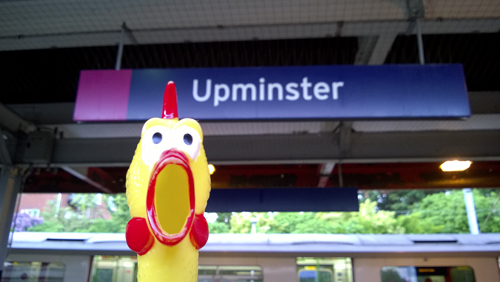
Upminster was recorded as Upmynstre in 1062 and the name is derived from mynster, which refers to a church served by several clergy, rather than to a monastery. The prefix up means ’higher ground’, although the town does not rise much above sixty feet. Upminster means – ’the church on high land’. The name of this area was originally Chafford, a corruption of St Chad’s Ford and tradition asks us to believe that the brothers St Chad and St Cedd used it as one of their preaching centres when brought Christianity to Essex in c. 670.
The station was opened as Upminster by the London, Tilbury & Southend Railway on 1 May 1885 and first used by Underground trains on 2 June 1902.
UPMINSTER BRIDGE
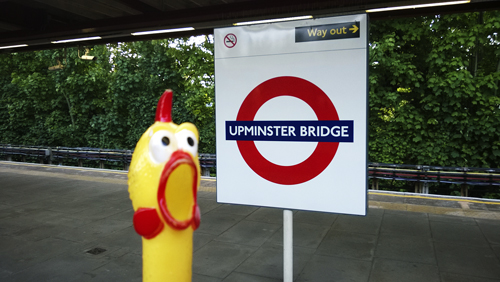
See Upminster. To the right of the station, under the railway bridge and near the ’Bridge House’ pub, there is a small iron road bridge, marked Upminster Bridge. Tradition has it that the Romans built a ford here over the River Ingrebourne during Caesar’s invasion of England. It seems that in c. 1300 a wooden bridge was built to replace the ford. The present bridge was erected by Essex County Council in 1891.
The station was opened as Upminster Bridge on 17 December 1934.
UPNEY
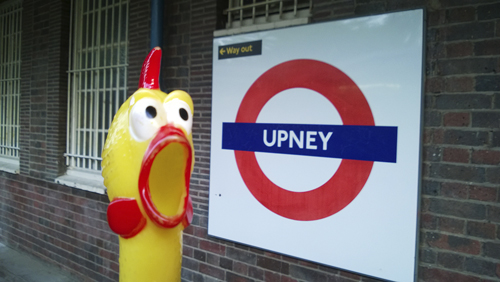
Upney simply means the upper-stream and this local natural feature gives the name to this district. Derived from the Old English upp (higher up) and eg (stream).
The station was opened as Upney on 12 September 1932.
UPTON PARK
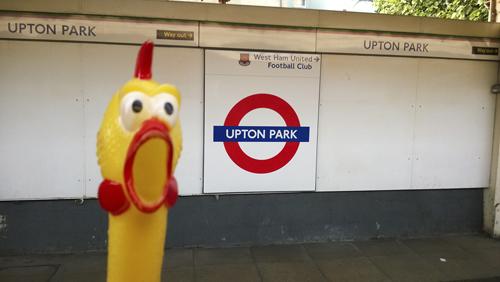
Upton is derived from up and the Old English tun, ’a farm’ – and means ’the farm, or homestead on higher ground’ once in a park, and the district is so named.
The station was opened as Upton Park by the London, Tilbury & Southend Railway in 1877 and first used by Underground trains on 2 June 1902.
UXBRIDGE
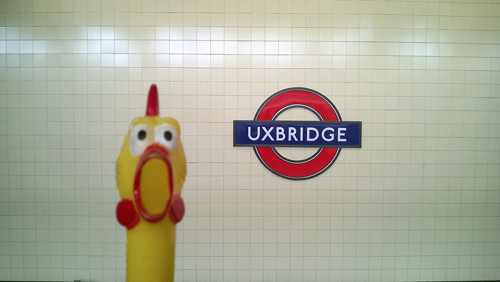
Uxbridge was recorded as Oxebruge c. 1145 and the name is derived from a 7th century tribe, the Wixan, who settled here, and in the course of time this has been abbreviated to Ux. The bridge is an ancient one over the river Colne and has variant spellings until recorded as Uxbridge in 1398.
The original station was opened as Uxbridge on 4 July 1904, and was replaced by the present re-sited station on 4 December 1938.
VAUXHALL
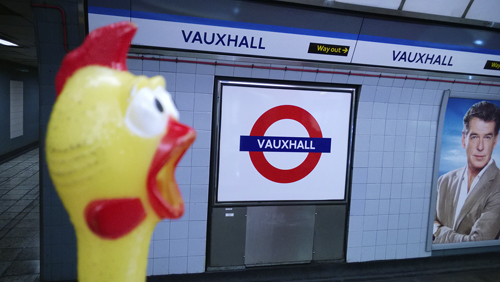
Vauxhall is named from the Norman Falkes de Breuté who obtained the manor of Lambeth by his marriage to the heiress Margaret de Riparus (or Redvers) in c. 1220, the manor being granted to him in 1223. Recorded as Faukeshale in 1279, corrupted to Fox Hall then eventually to Vauxhall.
The Underground station was opened as Vauxhall on 23 July 1971.
VICTORIA

Like many other places the station was named in honour of Queen Victoria. The main-line station, opened on 1 October 1860, stands on piles over the basin of the former Grosvenor Canal.
The Underground station was opened as Victoria on 24 December 1868.
WALTHAMSTOW CENTRAL
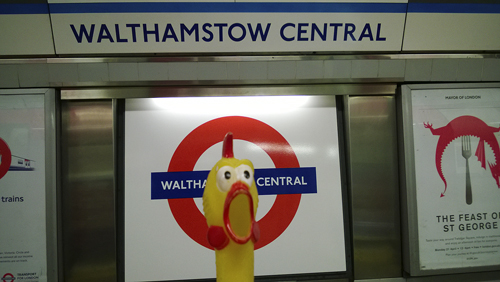
Walthamstow Central was recorded as Wilcumestowe c. 1075 and the name may be derived from the Old English wilcume, ’welcome’ and stow, ’a holy place’ – ’the holy place with a welcome’. Alternatively the name may derive from a religious place once founded here by a woman named Wilcume. It was recorded as Walthanstowe in 1446.
The original station was opened as Walthamstow (Hoe Street) by the Great Eastern Railway on 26 April 1870; it was re-named Walthamstow Central on 6 May 1968. Underground trains ran from 1 September 1968.
WANSTEAD
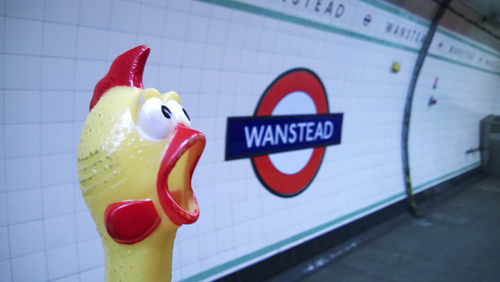
Wanstead was recorded as Waenstede in 1066 and the name is derived from the Old English waen, ’waggon’ and stede, ’place’. It seems that there was once a ford here, where waggons crossed a stream, and ’stede’ usually meant a holy place – therefore Wanstead means ’to the holy place, near the ford crossed by waggons’.
The station was opened as Wanstead on 14 December 1947.
WARREN STREET
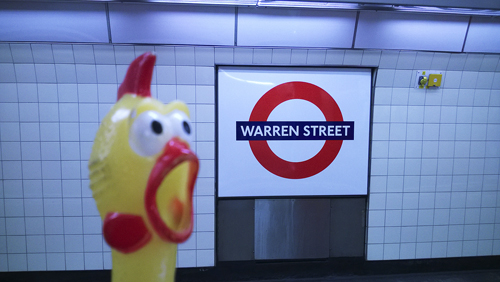
The estate of this area was owned by Charles Fitzrow, created Baron Southampton in 1780, who married Anne, the daughter of Sir Peter Warren. When the street was named in 1799 it was called Warren Street in his honour.
The station was opened as Euston Road on 22 June 1907 and was re-named Warren Street on 7 June 1908.
WARWICK AVENUE
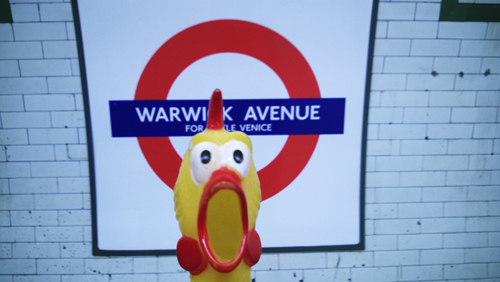
Many of the streets in the old manor of Paddington are connected with families who leased land from the Bishop of London. The original lessee was Sir John Frederick of Burwood in Surrey. His great-grandson married Jane Warwick of Warwick Hall in Cumberland in 1778 and the street is named in her honour.
Prior to the station’s opening the name was planned to have been Warrington Crescent, but it was opened as Warwick Avenue on 31 January 1915.
WATERLOO
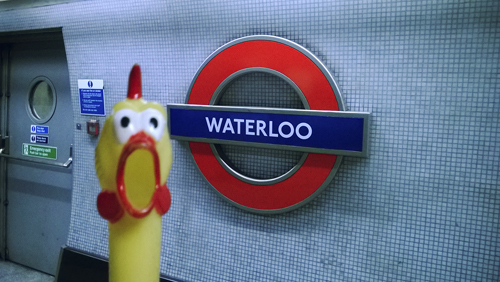
Waterloo was named in commemoration of the Battle of Waterloo (1815). The name was also given to the new bridge over the River Thames (originally called Strand Bridge) which was opened by the Prince Regent on 18 June 1817, the second anniversary of the Battle. The name was adopted for the main-line station opened on 11 July 1848, and later for the locality.
The Waterloo & City Line was built and run by the London & South Western Railway and its station was opened as Waterloo on 8 August 1898. Ownership of the line and stations was transferred to London Underground on 5 April 1994. The Bakerloo Line station was opened as Waterloo on 10 March 1906, followed by the Northern Line station on 13 August 1926.
WATFORD
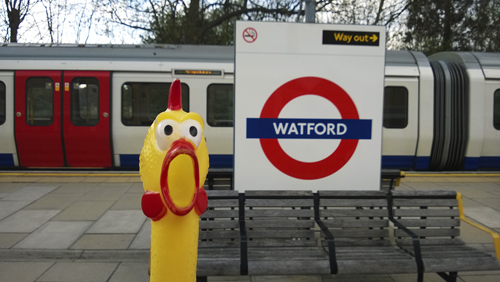
Watford was recorded in 944 and the name is derived from the Old English waed, ’place for wading’ or wad, ’hunting’ – and means ’ford which is used for hunters’, from a once nearby natural feature.
The station was opened as Watford on 2 November 1925.
WEMBLEY CENTRAL
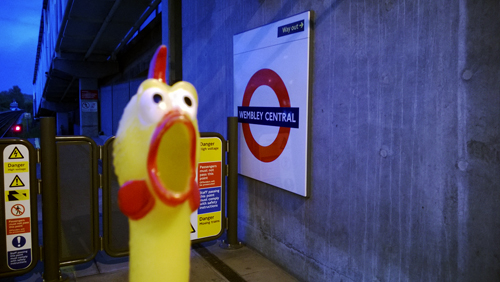
Wembley Central was recorded as Wemba lea in 825 and the name is derived from the personal name Wemba and the Old English leah, ’forest clearing’ – and means ’the clearing where Wemba lived’. This name may be a nickname or could be taken from Wemba, the name of a Gothic King. It has had various spellings until recorded as Wembley in 1535.
A station called Sudbury was opened by the London & Birmingham Railway in 1842. It was re-named Sudbury & Wembley on 1 May 1882 and Wembley for Sudbury on 16 April 1917; re-named Wembley Central on 5 July 1948.
WEMBLEY PARK
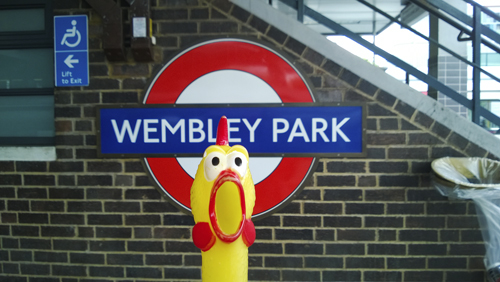
See Wembley Central. The Wembley stadium, exhibition and entertainment complex occupies the area of the original park.
The station was opened as Wembley Park on 12 May 1894.
WEST ACTON
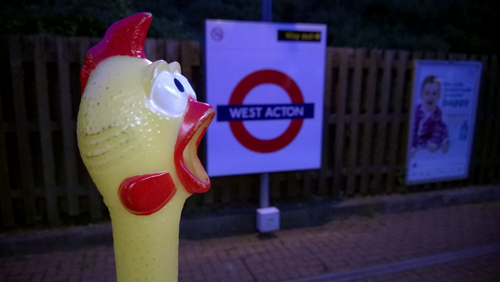
See Acton Town.
The station was opened as West Acton on 5 November 1923.
WESTBOURNE PARK
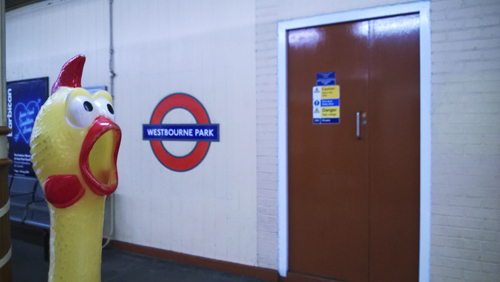
Westbourne Park was recorded as Westburn in 1222 and is derived from the Old English westan and burnam, ’place’ – means ’the place west of the stream’. Paddington was the sister village on the east bank. The road here was an ancient lane winding through the old Westbourne Farm. The Green was recorded in 1680 hence the Park, now a road.
The station was opened as Westbourne Park on 1 February 1866.
WEST BROMPTON
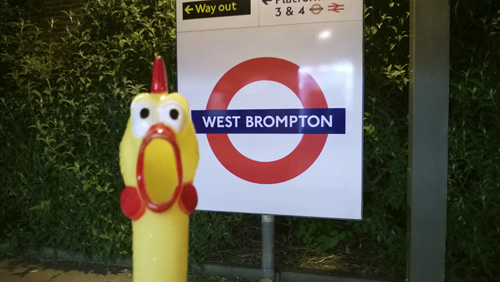
West Brompton signifies Broom Town with suggestions of a wide common – and means ’the common with the broom trees, near a town’.
Prior to the station’s opening the name Richmond Road was planned, reflecting the name of this part of Old Brompton Road which lasted into the 1920s. It was opened as West Brompton on 12 April 1869.
WEST FINCHLEY
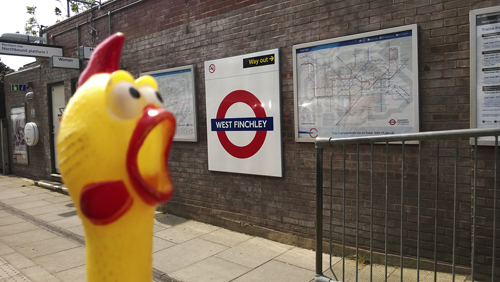
See Finchley Central.
The station was opened as West Finchley by the London & North Eastern Railway on 1 March 1933 and first used by Underground trains on 14 April 1940.
WEST HAM
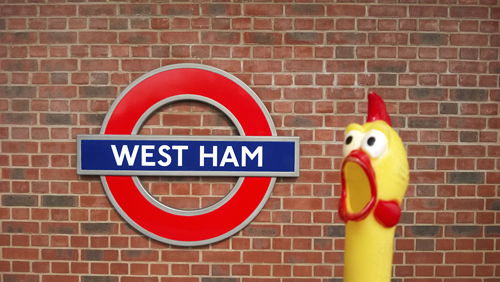
West Ham was recorded as Hamme in 958 which signifies that this and East Ham were then only one geographical location and it was not until 1186 that the name Westhamma was recorded. The name is derived from the Old English hamm, ’a water meadow’ – referring to the low-lying riverside meadow near the bend of the Thames. (See also East Ham.)
The station was opened as West Ham by the London, Tilbury & Southend Railway on 1 February 1901 and was first used by Undergound trains on 2 June 1902.
WEST HAMPSTEAD
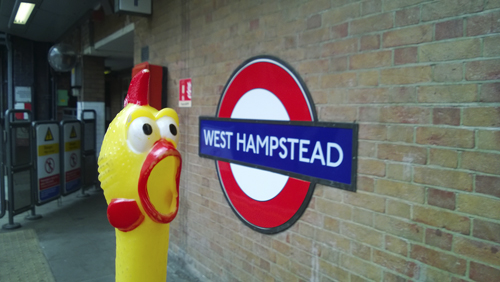
See Hampstead.
The station was opened as West Hampstead on 30 June 1879.
WEST HARROW
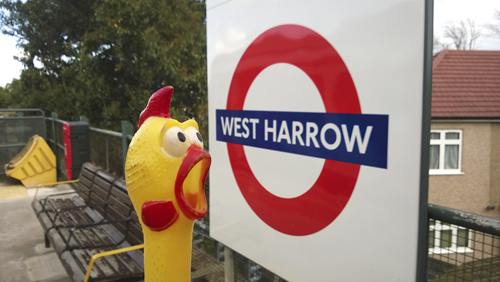
See Harrow-on-the-Hill.
The station was opened as West Harrow on 17 November 1913.
WEST KENSINGTON
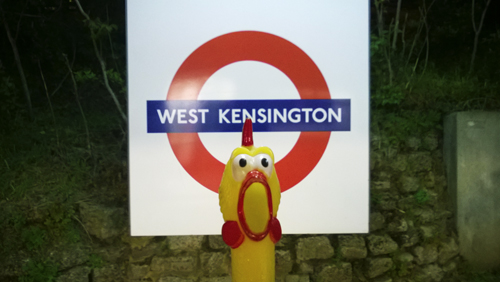
See Kensington (Olympia).
The station was opened as North End (Fulham) on 9 September 1874; re-named West Kensington 1 March 1877.
WESTMINSTER

By tradition the site of the Abbey was first known as Torneia (785) and means ’thorn island’, being once a low-lying islet regularly cut off from the mainland at high tide. Recorded as Westminster in 785, the name is derived from west and the Old English mynster, ’monastery’ or ’church’, the west because it lies to the west of London. Westminster Abbey began as a small church attached to a Benedictine monastery, was rebuilt in the eleventh century and completed in 1388. The village of Westminster (a City since 1540) was joined up to London in the 18th century.
The station was opened as Westminster Bridge on 24 December 1868; re-named Westminster in 1907.
WEST RUISLIP
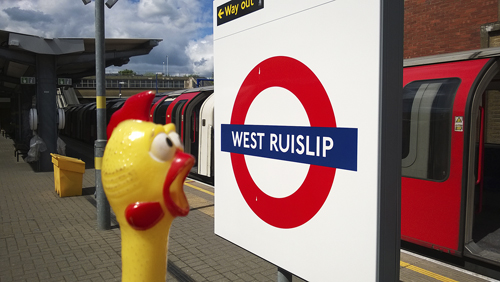
See Ruislip.
The adjacent main line station was opened by the Great Western & Great Central Joint Committee on 2 April 1906 as Ruislip & Ickenham. It was re-named West Ruislip on 30 June 1947. In preparation for the opening of the Underground station, the committee of the New Works Programme 1935/40 suggested naming it Ickenham Green. However, delayed by the Second World War, the Underground station was opened as West Ruislip on 21 November 1948.
WHITECHAPEL
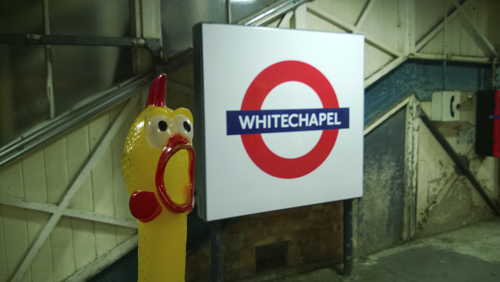
Whitechapel takes its name from the white stone chapel of St Mary Matfelon, first built in 1329, then rebuilt three times, until bombed in 1940 and finally demolished in 1952. Today there is no trace of the church that gave its name to this district.
The station was opened as Whitechapel on 10 April 1876; first used by Underground trains on 1 October 1884.
WHITE CITY
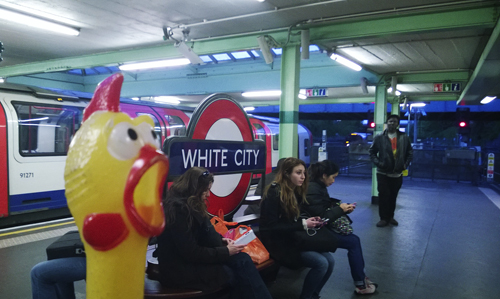
The sports stadium was opened in 1908 to house part of the Franco-British Exhibition. The strikingly white finish of the buildings, and the exhibits in the main hall (all of which were white), earned the stadium its name.
The Hammersmith & City Line station was opened on 1 May 1908, and the Central Line station on 14 May 1908, both as Wood Lane. The Central Line station was re-sited and both re-named White City 23 November 1947. The Hammersmith & City Line station was closed from 25 October 1959; since 1 November 1914 it had been used only on special occasions.
WILLESDEN GREEN
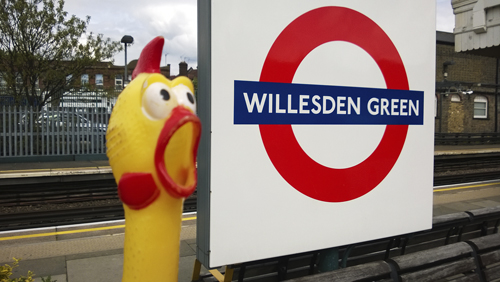
Willesden Green was recorded as Willesdone Grene in 1254 and was formerly a distinct hamlet. Willesden itself was recorded as Willesdune in 939 and is derived from the Old English wiell, ’spring’ and dun, ’hill’, and means – ’hill of the spring’, referring to a once nearby natural location. Willesden was the name adopted c. 1840 by the London & Birmingham Railway from the earlier spelling of Wilsdon.
The station was opened as Willesden Green on 24 November 1879.
WILLESDEN JUNCTION
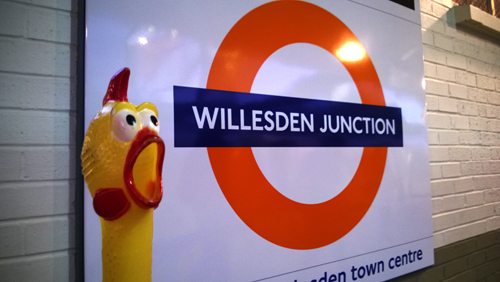
See Willesden Green. The name has its origin in the railway junction at this point.
The station was opened as Willesden Junction by the London & North West Railway on 1 September 1866 and was first used by Underground trains on 10 May 1915.
WIMBLEDON
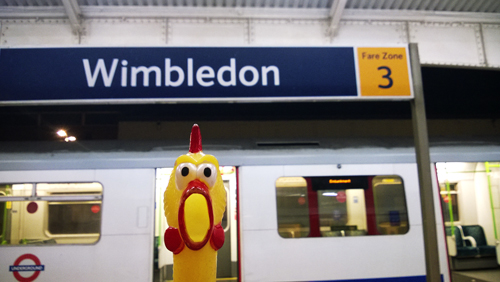
Wimbledon was recorded as Wunemannedunne c. 950 and is derived from the personal name of the Saxon Winebeald and down, ’a hill’ – means ’the hill where Winebeald lived’, with his family. It has had various spellings in the course of time until recorded as Wimbledon in 1211.
The original London & Southampton Railway station was opened as Wimbledon on 21 May 1838. The platforms for terminating District Line trains were opened on 3 June 1889.
WIMBLEDON PARK
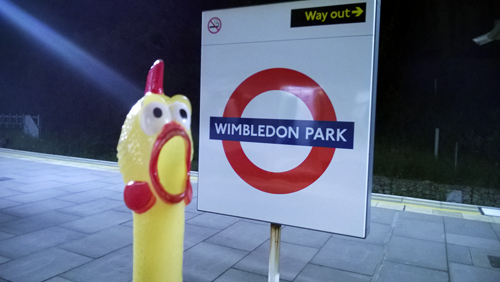
See Wimbledon. The Park is to the west of the station.
The station was opened as Wimbledon Park by the London & South Western Railway for the use of their own and District Railway trains on 3 June 1889.
WOODFORD

As the name suggests, means ’the ford by a wood’, over the River Roding which runs through the district.
The station was opened as Woodford by the Eastern Counties Railway on 22 August 1856 and first used by Underground trains on 14 December 1947.
WOOD GREEN

Wood Green was recorded as Wodegrene in 1502 and was once a seperate hamlet on the edge of Enfield Chase. As the name suggests it means ’the wood by the green’.
Prior to the station’s opening the name Lordship Lane was proposed, but it opened as Wood Green on 19 September 1932.
WOOD LANE

There have been three stations in the area whit this name, the latest being a new station on the Hammersmith & City Line. The other two were a station on the same line situated across the road from the present one, closer to Shepherd’s Bush, opened 1 May 1908 and closed 25 October 1959 (by which time it had been re-named White City) and a terminal station on the Central London Railway opened 14 May 1908 and closed 23 November 1947 (to be replaced by the Central Line station named White City further to the north). The name Wood Lane came into use here in the first few decades of the 19th century and reflects the fact that this was once situated in London’s countryside. It is one of nine Wood Lanes in Greater London, but with the presence of the BBC Television Centre and the new Underground station, this is undoubtedly the best known of them.
The present Wood Lane station was opened on 13 October 2008.
WOODSIDE PARK

Woodside Park was recorded as Fyncheley Wode in 1468 and was part of the great Middlesex woodland area. It was named Woodside in 1686 – being at the side of the wood.
The station was opened as Torrington Park, Woodside by the Great Northern Railway on 1 April 1872. It was re-named Woodside Park on 1 May 1882 and was first used by Underground trains on 14 April 1940.

